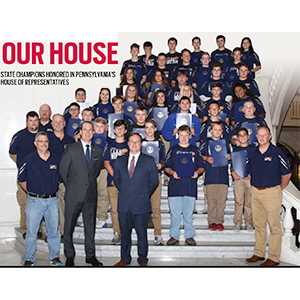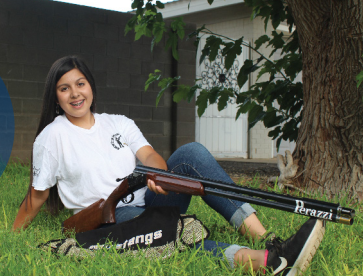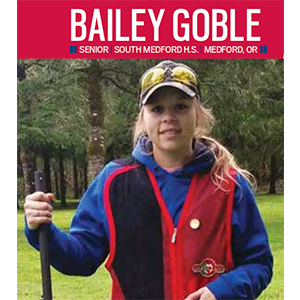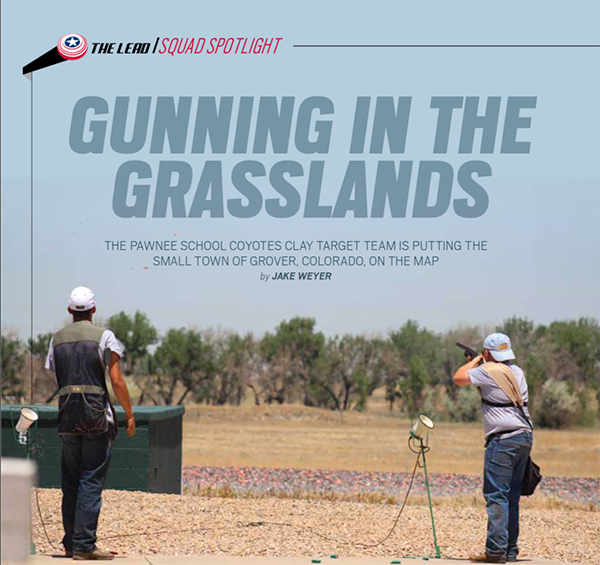
In northeastern Colorado, surrounded by nearly 900 square miles of Pawnee National Grass- lands, ranches and farms, is the small, 150-person town of Grover.
That’s where you’ll find Pawnee School, which serves about 80 K–12 students, nearly a quarter of them in grades 6–12. And almost all of the students in those upper grades are hooked on the school’s newest sport: trap shooting. “I get just as much of a thrill out of it as I do playing basketball, football, baseball— any of those sports,” says Pawnee School senior James Krist. “It is a real sport and it is really enjoyable.”
The Coyotes trap squad got its start last year thanks to Pawnee School social studies teacher John Foster, now the head coach. Foster, a lifelong hunter and out- doorsman, approached the school superin- tendent about the idea after hearing about the League in 2017. The team was quickly formed with enthusiasm from both the school and community.
“I just think teaching our kids proper and safe use of a firearm is very important in this day and age that we live in,” Foster says. “And the more we can get them out- side and doing outside activities, I think it’s beneficial to the students. And I just shot a lot of trap in my life and have always enjoyed it and would like for the kids to have that experience too.”
The team had 18 student athletes in its first year and 17 are participating this year. Foster expects the numbers to stay consis- tent given the size of the school. The team has a good mix of ages, and most students have had at least some firearm experience.
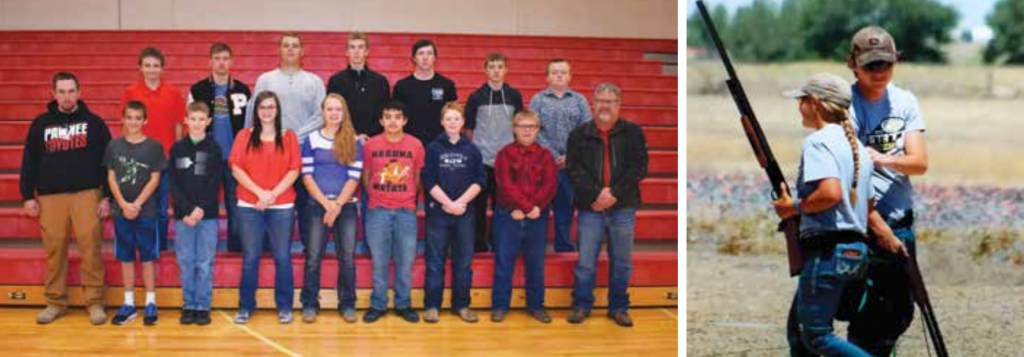
Krist, for example, shot in 4-H before joining the team. He averaged 22.5 of 25 during his first year in the League and finished third in the state competition. He’s eyeing the top spot next year, but is having a lot of fun with his teammates regardless.
“We’re a small school so you know every- one, but you don’t know much about everyone,” he says. “But there were quite a few shooters who came out, who I didn’t really know about and it’s just cool to see how everyone grew through the season, too.”
Missy Cline, another senior on the team, had shooting experience, but had never shot trap before last year. After a season that started with scores of six and seven, she ended shooting 17s and 18s, with a high of 22.
“When I first started, it was something different and new,” she says. “I just really like the sport so I think that got me more engaged in it. And I liked having the opportunity to be shooting with my friends, being out there and getting better.”
Team member Shelby Hoffman, a sophomore with prior shooting experience in 4-H, started out shooting 14 and ended the season closer to 20. She’s hoping for a 25 next season.
Helping out her younger teammates has been one of Hoffman’s favorite parts of being on the team. She says she was a little intimidated at first, but that faded when she started shooting. “Then I figured out that it’s fun beating boys,” she says.
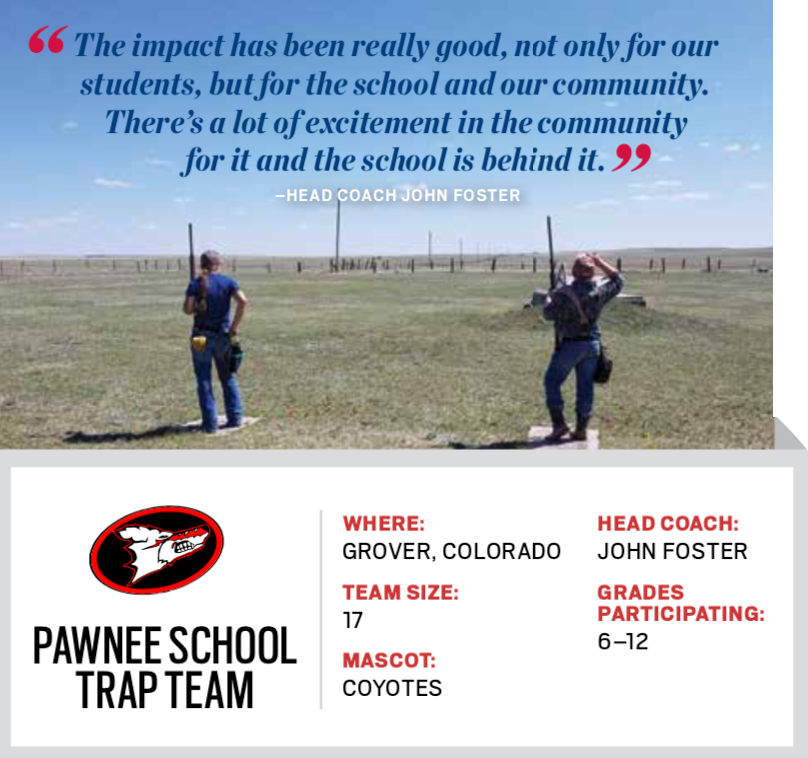
The Coyotes placed second in their division in state and had several shooters place high as individuals. The ultimate goal is to win the state championship, Foster says, and to just get better every day the team shoots. He urges his athletes to be their best and to challenge themselves, but he also keeps it fun with occasional games, such as Annie Oakley, thrown into practices.
The team practices twice a week on a nearby community fairground that has a trap box. Last year the team was really just learning the ropes, Foster says, whereas this year he plans on organizing a fundraising event for the team, along with some family fun days and other ways to build and promote the team.
“The impact has been really good, not only for our students, but for the school and our community,” Foster says. “There’s a lot of excitement in the community for it and the school is behind it.” Krist, who has made trap his sole sport after an injury prevented him from participating in other activities, sees the trap squad as more than a team.
“A team is a family. There are days, it doesn’t matter who it is, if someone is not shooting good, there are three or four people or more trying to help them, build them up,” he says. “It’s one big family.”

